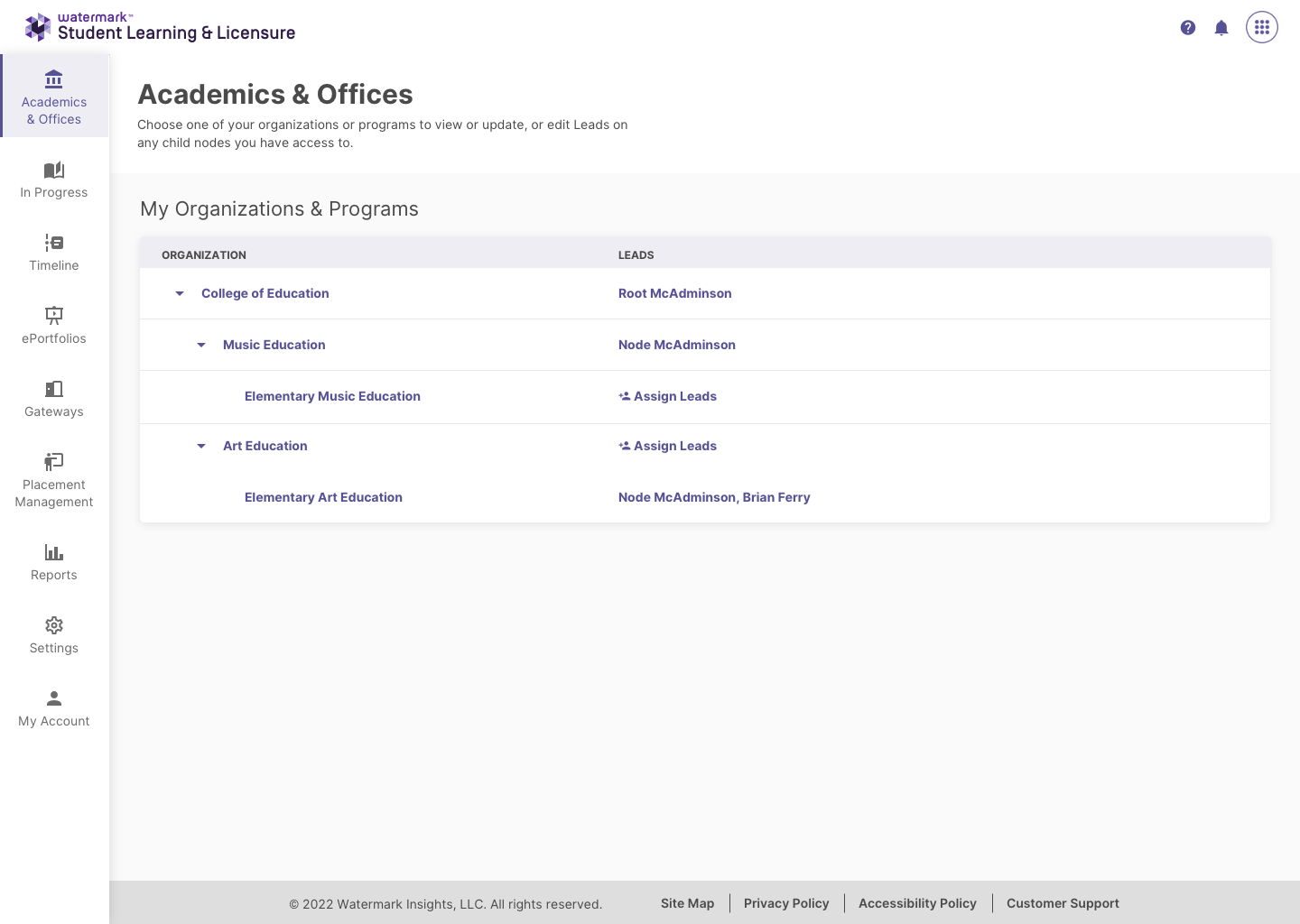
How To Turn Five Products Into One That’s better than the sum of its parts.
Design, Strategy, & Collaboration.
The Context
As a result of various mergers and acquisitions Watermark Insights had in its possession a number of products that helped manage the process of licensing students to work in fields like education or nursing.
After a review of the product portfolio it was decided that the best course of action would be to consolidate some of these tools and deprecate others.
The ultimate goal of consolidation was to unify five distinct tools into a single product called Student Learning & Licensure (SL&L), which would then be sold as part of a suite.
The Problem
Each of the tools we were looking to consolidate had been made by a different company, had a distinct aesthetic, and a dedicated user base. The long term goal of the company was to have a single product that addressed the needs of these different user groups and offered something more than what they’d had before.
While these different products did essentially the same thing, they did so in very distinctive ways. Much like how a car, a bike, or a horse can all get you where you need to go, despite being very different things. The task at hand was essentially to invent a new mode of transportation that satisfied motorists, bicyclists, and cowboys.
The Process
There were a lot of things to figure out but I decided that the best place to start would be the navigation. I figured that if we knew how all of the different pieces of functionality might fit together we’d have a framework that would help make other decisions more easily.
I organized a series of workshops with my team in which we worked out what features we thought would need to move into the new tool and then put together a sprawling draft sitemap.
Sitemap, Version 1.
After a bit of editing and some reviews with product and engineering, I arranged a series of tests with a cross section of users from each of the different products. Each user was given a list of tasks and asked where they would go to complete them in the draft site map. The observations from those tests were very illuminating and allowed us to draft a second, more streamlined version.
Sitemap, Version 2.
After completing the second sitemap I arranged a second round of testing with new users and was thrilled to find that they consistently thought the experience was easy to navigate and had successfully incorporated most of the features they needed to do their jobs. This also allowed us to start identifying feature gaps that we could address as we planned out the new product.
With a blueprint in hand, the next step was to figure out how to build Student Learning & Licensure. Creating a unified experience from these different tools was still an enormous task and we needed to find a way to start strategically building features out.
One of the five tools — a product called VIA — was chosen to serve as a foundation for SL&L. I synthesized our sitemap and VIA’s existing navigation to create a hybrid that would set us up for success.
Hybrid Navigation
Combining the long-term vision of the new sitemap with VIA’s existing information architecture allowed us to start transitioning the product into Student Learning & Licensure in a way that didn’t disrupt existing processes. It also established the framework we’d use to incorporate or deprecate functionality going ahead.
The sitemap served as a clear outline of the features we had, which made it easier to identify the ones we were missing. With that information in hand we collaborated with the product team to plan and prioritize projects that would allow us to resolve these gaps and encourage clients to move from legacy products onto SL&L.
The Results
In addressing the feature gaps we’d identified, we ended up creating a tool to manage student candidates that drastically simplified the licensure process and that none of our competitors had. You can learn more about that here.
This plan continued to inform feature development for a number of years after it was first developed, serving as a guiding light that made it easier for the design, product, and engineering to work towards a shared vision of what the product could be.






